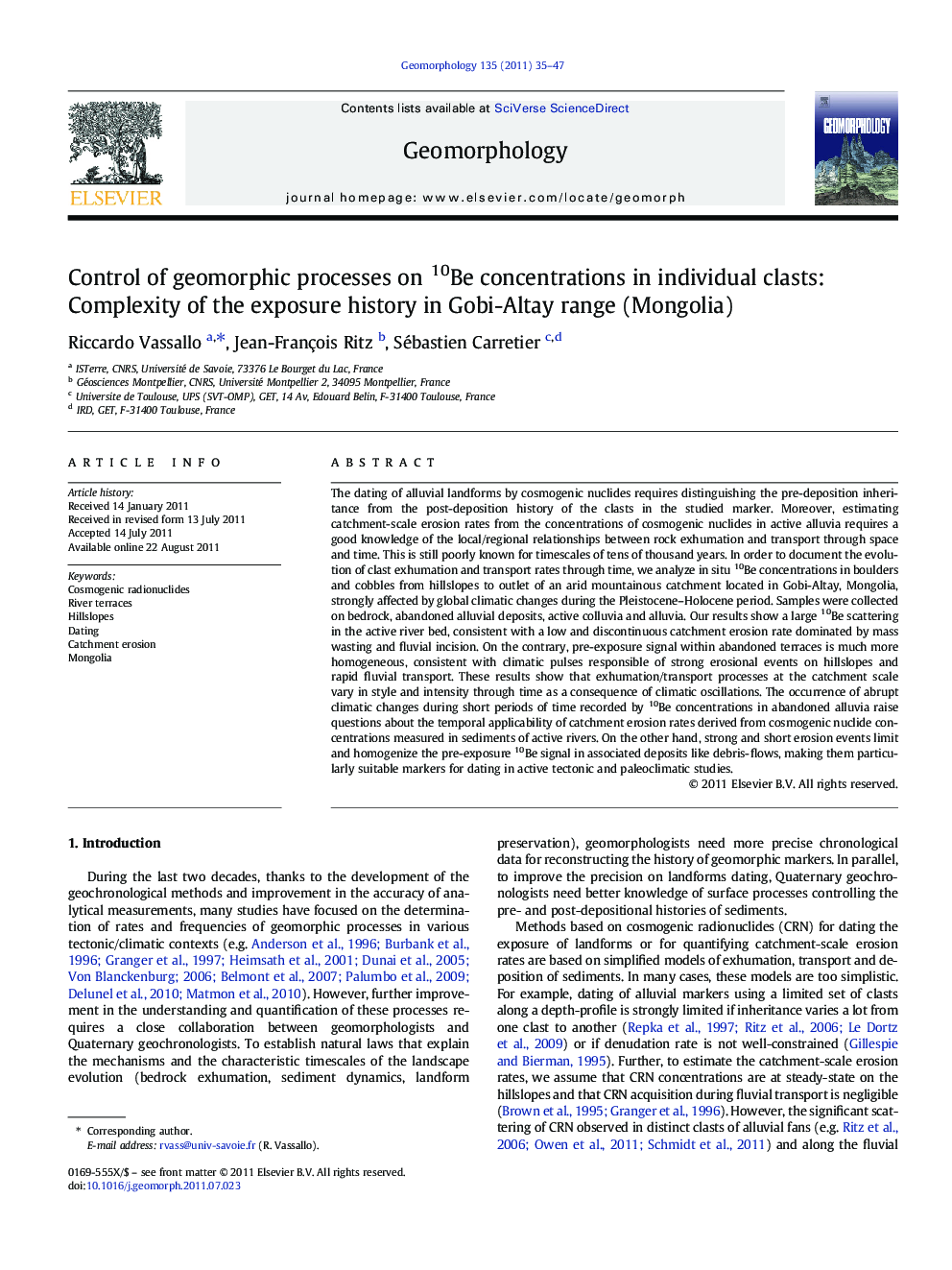| Article ID | Journal | Published Year | Pages | File Type |
|---|---|---|---|---|
| 4685429 | Geomorphology | 2011 | 13 Pages |
The dating of alluvial landforms by cosmogenic nuclides requires distinguishing the pre-deposition inheritance from the post-deposition history of the clasts in the studied marker. Moreover, estimating catchment-scale erosion rates from the concentrations of cosmogenic nuclides in active alluvia requires a good knowledge of the local/regional relationships between rock exhumation and transport through space and time. This is still poorly known for timescales of tens of thousand years. In order to document the evolution of clast exhumation and transport rates through time, we analyze in situ 10Be concentrations in boulders and cobbles from hillslopes to outlet of an arid mountainous catchment located in Gobi-Altay, Mongolia, strongly affected by global climatic changes during the Pleistocene–Holocene period. Samples were collected on bedrock, abandoned alluvial deposits, active colluvia and alluvia. Our results show a large 10Be scattering in the active river bed, consistent with a low and discontinuous catchment erosion rate dominated by mass wasting and fluvial incision. On the contrary, pre-exposure signal within abandoned terraces is much more homogeneous, consistent with climatic pulses responsible of strong erosional events on hillslopes and rapid fluvial transport. These results show that exhumation/transport processes at the catchment scale vary in style and intensity through time as a consequence of climatic oscillations. The occurrence of abrupt climatic changes during short periods of time recorded by 10Be concentrations in abandoned alluvia raise questions about the temporal applicability of catchment erosion rates derived from cosmogenic nuclide concentrations measured in sediments of active rivers. On the other hand, strong and short erosion events limit and homogenize the pre-exposure 10Be signal in associated deposits like debris-flows, making them particularly suitable markers for dating in active tectonic and paleoclimatic studies.
Research Highlights► We measure in situ 10Be in bedrock and sediments of an arid mountainous catchment. ► We document the evolution of clast exhumation/transport styles and rates. ► Strong erosional events limit and homogenize pre-exposure 10Be signal in sediments. ► Associated deposits are particularly suitable markers for dating. ► Variability in geomorphic processes must be considered for erosion quantification.
